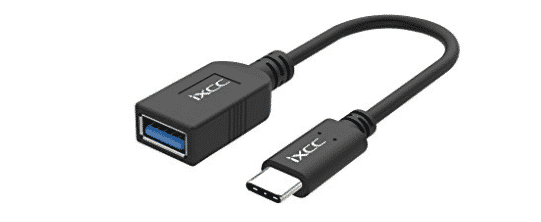How to Connect USB keyboard or Mice to Android Device
Nothing beats a physical keyboard or mouse when it comes to typing speed. Even on the most up-to-date smartphones or notepads, virtual keyboards remain slow. So, if you want to make typing easier and increase your productivity, you should use a physical keyboard or mouse. You can connect these input devices using a cable or wirelessly, depending on your Android device’s connectivity settings.
Option-1 USB OTG
USB keyboards and mouse are supported by all recent Android smartphones. To do so, all you need is an OTG (On-the-Go) cable. The cable features a micro USB connector on one end (which plugs into the phone’s charging port) and a USB Female port on the other end, which can be used to connect a USB keyboard.
On the internet, you can find a variety of USB cable options. The greatest USB cables are listed here; choose the one that best suits your needs.
Micro USB to USB 3.0 Type A

This is a single cable that links the micro USB port on the smartphone to the keyboard on the other end. Only one device can be connected at a time. Keyboards, mice, flash drives, game controllers, and battery banks are among the devices that can be connected.
Type C USB to USB 3.0 Type A

This cable is for cellphones that support USB Type-C. These are low-cost cables that work with all Type-C port phones, Chromebooks, and Apple MacBooks. Apart from the keyboard, any USB device can be connected to transfer files at up to 5 GB per second.
Micro USB Hub

Another alternative is to utilize a Hub, which allows you to connect both your keyboard and mouse to your smartphone. This hub has a large number of USB female Type-A connectors, allowing you to connect your charger, pen drive, and other devices at the same time. The hubs, like mono-cables, come with Type-C USB Hub as well as Micro USB port Hub.
Option-2 Bluetooth Connectivity
If your Android device doesn’t support OTG cords, don’t despair: this option allows you to connect your keyboard or mouse wirelessly using Bluetooth technology. Simply turn on your smartphone’s Bluetooth, look for a keyboard/mice, and pair them. That is all there is to it.
Improve productivity by connecting keyboard to Android phone
Setting up the keyboard is simple after you’ve established a connection through wire or Bluetooth. All you have to do now is choose your region’s keyboard layout. All of the keys, including Enter and page down/up, operate fine, and you can use the PrtSc (print-screen) button in the same way as you would take screenshots on a windows PC. You may use the keyboard for the most part, but you will undoubtedly miss the ability to use emojis and other effects. With these connectivity choices, you can work on Android just like you would on a laptop. When compared to working on a laptop, using an Android mobile provides superior battery life, a lower cost device, and more flexibility.